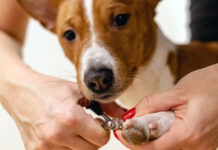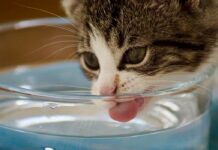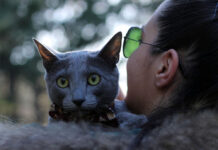Cats are the most popular pets in the United States. According to the latest version of the U.S. Pet Ownership & Demographics Sourcebook (2002 Edition) there were almost 70 Million pet cats in the United States. Why are cats so popular? There are as many answers to this question as there are cat owners, but the low health risks cats pose to their owners is certainly near the top of this list. Even though the potential health risks cats pose to people are small, it is important that cat owners are aware of these risks and understand how to reduce them.
The majority of all risks stemming from cat ownership are associated with the cat litter box and/or cat feces. There are two categories of risks. The first category contains health risks posed by bacteria and parasites to both cat owners and their cats. The second category contains injuries resulting from an automatic litter box or self cleaning litter box.
Primarily the health problems experienced by cat owners or their cats come from the first category and the most significant of these risks is called Toxoplasmosis. Toxoplasmosis is an infection caused by a tiny parasite called Toxoplasma gondii which can be found in raw or undercooked meat, unwashed fruits and vegetables, dirty cat litter boxes and outdoor soil where cat feces can be found. According to the Center for Disease Control and Prevention (CDC) more than 60 million people in the United States may be infected with the Toxoplasma parasite(1). Fortunately, very few people ever experience any symptoms because a healthy person’s immune system usually keeps the parasite from causing illness. However, pregnant women and individuals who have compromised immune systems, such as individuals infected with the HIV virus, are at risk and should take precautions to avoid being infected by the parasite. For people in this group a Toxoplasma infection could cause serious health problems to the individual or to a pregnant woman’s unborn child.
Again, most of the 60 million plus American’s infected with Toxoplasmosis parasite will never experience any symptoms. Most of those who do experience symptoms will simply think they have the Flu as the most common symptoms include swollen glands, fever, headache, muscle pain, or a stiff neck. For those in the high risk group, Toxoplasmosis can cause damage to the brain, eyes and internal organs. According to the US Food and Drug Administration, children born with Toxoplasma gondii can suffer from hearing loss, mental retardation, and blindness with some children developing brain or eye problems years after birth(2). The CDC estimates that 400-4000 fetuses are infected with the Toxoplasma gondii parasite each year and as many as 80 infants die from Toxoplasmosis annually(2).
So how does an individual contract Toxoplasmosis? A Toxoplasmosis infection is caused by ingesting the Toxoplasma gondi parasite. Most cat owners are infected with the parasite by accidentally ingesting infected cat feces. This happens when a person touches their mouth after handling a cat litter box, working in a garden or sand box or touching anything that has come in contact with cat feces(3).
People in the high risk group may wonder whether or not they should give up their cat to avoid infection. According to the CDC, it is not necessary for cat lovers to give up their cats, but it is important for them to protect themselves from infections. The USFDA makes the following recommendations for avoiding infections(2):
1) If possible, have someone else change the litter box. If you have to clean it, wear disposable gloves and wash your hands thoroughly with soap and warm water afterwards.
2) Change the litter box daily. The parasite doesn’t become infectious until one to five days after the feces are deposited in the litter box.
3) Wear gloves when gardening in a garden or handling sand from a sandbox because cats may have excreted feces in them. Be sure to wash your hands with soap and warm water afterwards.
4) Cover outdoor sandboxes to prevent cats from using them as litter boxes.
5) Feed your cat commercial dry or canned food. Never feed your cat raw meat because it can be a source of the Toxoplasmosis gondii parasite.
6) Keep indoor cats indoors. Be especially cautious if you bring outdoor cats indoors.
7) Avoid stray cats, especially kittens.
8) Don’t get a new cat while you’re pregnant.
Safer Child, Inc. makes the following additional recommendations(4):
1) Have your veterinarian test your cat for the Toxoplasmosis parasite. If you cat is infected, you may want to consider having someone else keep your cat during your pregnancy.
2) Keep sandboxes covered to prevent cats from using the sandbox as a litter box.
3) Be aware of neighborhood sandboxes as the parasite can be brought home on shoes, clothing and toys.
Similar to Toxoplasmosis, Escherichia coli (commonly called E. coli) can infect humans thru contact with feline fecal material, although the primary means of infection is thru ingestion or raw or undercooked meats. E. Coli is a bacterium commonly found in the intestinal tract of humans and animals. Almost all strains of the bacteria are harmless. However a few strains can produce powerful toxins and cause severe illness, especially in children under 5 years of age(5). Symptoms usually include diarrhea and abdominal cramps. In children under 5, 2%-7% of E. coli cases can cause kidney failure. Fortunately, E. coli is easy to prevent. Using the preventative measures, outlined above for Toxoplasmosis will greatly reduce the risks of you or your children contracting an E. coli infection.
In addition to these human risks, there are a few health risks cat litter boxes actually pose to cats that cat owners should be aware of. Just as a dirty litter box poses health risks to humans, cats are equally at risk if forced to use a dirty litter box. Since cats stay clean by licking themselves, allowing a cat’s litter box to get too dirty can cause infections when a cat cleans it’s paws after using the dirty litter box. The most common infection is a urinary tract infection, and although this type of infection is rarely fatal it can be very uncomfortable for your cat and will most likely require treatment by your veterinarian.
Finally, a lesser-known health risk to cats is actually caused by cat litter itself. What many cat owners do not realize is that some types of cat litter can be harmful or even fatal to their cat. Both clumping and non-clumping litters pose health problems to cats. Clumping cat litters are probably the most popular type of cat litter because of their convenience, hygienic qualities and the fact that clumping litters are required for use in self-cleaning litter boxes. Unfortunately, some clumping litters can be harmful to cats. Clay based clumping litters can contain the mineral sodium bentonite, which can be harmful or fatal to your cat. It is best to avoid using clay based cat litters, especially with kittens. Wheat or corn based clumping litters such as Swheat Scoop, World’s Best Cat Litter and Littermaid cat litter work very well and are non-toxic(6).
By their very nature, non-clumping litters do not absorb and isolate a cat’s urine or feces like clumping litters do. As a result, it is much harder to keep your cat’s litter box clean when using non-clumping litter. When using non-clumping litter it is important to frequently clean and disinfect the litter box itself to reduce the chance of bacterial buildups that can cause urinary or other infections in your cat.
The second category of health risks covers injuries caused by an automatic litter box or self cleaning litter box. Occurrences of this type of injury are rare, but they can happen. An automatic or self cleaning litter box does just what it’s name implies. Usually between 10-15 minutes after a cat uses the litter box, the litter box automatically cleans itself by “sweeping” or “raking” the cat waste into a sealed compartment or bag. For cat owners, injuries can occur if a small child or toddler plays with the automatic litter box during the cleaning cycle. All major brands of automatic litter boxes contain sensors to prevent the cleaning mechanism from activating when a cat or other foreign object is inside the box. However, children can still be injured if they put their hand inside the cleaning mechanism in such a manner as to avoid the sensors.
Although these types of injuries are very rare it is best to take precautions. Placing the litter box in a location where your cat can get to it but small children can’t is an easy method. This is good advice for any litter box as this is the best way to keep children from contracting one of the illnesses described earlier in this article. If you can’t keep the automatic litter box out of a child’s reach then it is best to put the litter box inside a litter box cover. There are many types of covers and all of them will help prevent a child from reaching the litter box and the cleaning mechanism. A final option is to unplug the litter box or put it into a “manual operation” mode. Both of these options will require the cat owner to start the cleaning cycle whenever necessary. Although this reduces some of the convenience of an automatic litter box it certainly removes the danger to children.
Automatic or self cleaning litter boxes are completely safe for almost all cats. However, most manufacturers recommend that the litter box be used in “manual operation” mode for cats under 5 lbs. Cats under 5 lbs many not be large enough to activate the sensors and the cleaning mechanism could cause injury. Since most adult cats weigh over 5 lbs, it is only necessary to use the “manual operation” mode until kittens grow to 5 lbs.
This article is not intended to dissuade anyone from owning a cat. 70 Million cat owners can’t be wrong; cats make great pets! So, if you already own a cat or are thinking of becoming a cat owner it simply makes good sense to be aware of the health risks associated with cat ownership. Understanding the risks can definately increase the enjoyment of cat ownership.
(1)Toxoplasmosis Fact Sheet; http://www.cdc.gov/ncidod/dpd/parasites/toxoplasmosis/factsht_toxoplasmosis.htm
(2) While You’re Pregnant – USFDA
http://www.cfsan.fda.gov/~pregnant/whiltoxo.html
(3) Toxoplasmosis – An important Message for Cat Owners; http://www.cdc.gov/ncidod/dpd/parasites/toxoplasmosis/toxoplasmosis_brochure_8.2004.pdf
(4) Safer Child, Inc.;
http://www.saferchild.org/pets&.htm
(5) Escherichia coli O157:H7 Fact Sheet;
http://www.cdc.gov/ncidod/dbmd/diseaseinfo/escherichiacoli_g.htm
(6) Stanford Cat Network’s – Guide to Caring for Your Adopted Cat or Kitten;
http://www.stanford.edu/group/CATNET/articles/careguide.html#litter




















